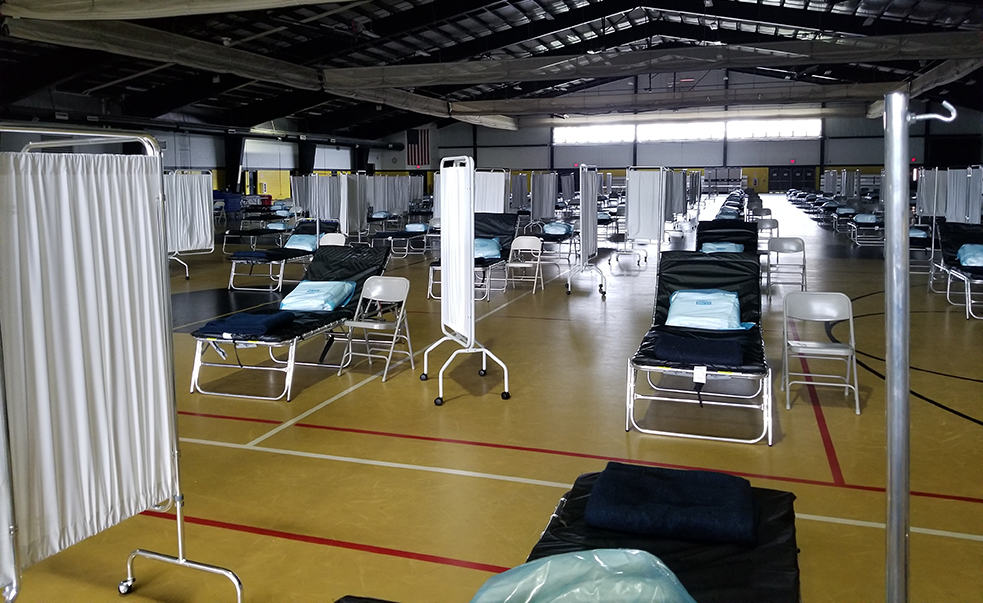From seasonal flu epidemics to the recent onset and global spread of Coronavirus (COVID-19), crisis situations in healthcare are highlighting how easily the medical system’s capacity can be overrun. Hospitals need the ability to respond rapidly to such emergencies with the build out of temporary medical space capacity when and where it is needed. Readily deployable where no infrastructure yet exists, Rajant Kinetic Mesh® is ideal for connecting pop-up and mobile environments for emergency care.
Critical to the setup of emergency medical spaces – from medical tents to inflatable hospital shelters to repurposed buildings – is a communications network to connect healthcare workers within the triage space and back to personnel at the main hospital location. Triage teams need connectivity to pull up medical records, access digital images like X-rays or CT scans, and place prescriptions, as well as to track medical carts and supplies statuses to manage resource allocation for the temporary facility. In these situations, every minute wasted can put the health of many at risk, so the network must be easily and rapidly deployable, and must work reliably no matter the conditions or environment.
Rajant’s private wireless network meets all the vital communications requirements for emergency care space expansion because it has been architected from the ground up for ad hoc deployment in virtually any setting – without the need for existing infrastructure.
Deploy Rajant’s ruggedized BreadCrumb® nodes and network virtually anywhere.
The BreadCrumb nodes that comprise a Kinetic Mesh network are ruggedized to withstand harsh outdoor environments and can be easily affixed to both stationary and moving equipment or vehicles so they can take connectivity with them as they roam. BreadCrumbs work peer-to-peer and are able to hold multiple connections over multiple frequencies simultaneously, making Kinetic Mesh uniquely able to both augment existing mobility-challenged networks and to be deployed where no infrastructure yet exists. It seamlessly integrates with existing network infrastructures in use, making it possible to readily fill gaps in coverage where other network systems do not or cannot reach, providing instant expansion of coverage.
Ensures uptime for emergency care communications with multi-radio, multifrequency redundancy.
Rajant’s proprietary InstaMesh® networking protocol allows multi-radio BreadCrumb nodes to automatically make redundant connections with other nodes, creating hundreds of potential paths over which to direct traffic. This invisible mesh provides a backbone for unmatched reliability, with InstaMesh dynamically selecting the fastest path(s) for delivery from the meshed connections. If one path becomes blocked or is affected by interference, InstaMesh will instantly route communications via the next-best available path(s) and/or frequency, ensuring no single point of failure.
A Rajant Kinetic Mesh network is a full-duplex network, where each radio transceiver within a BreadCrumb node can operate independently and simultaneously. This allows the network to make multi-hop transmissions with no loss of throughput…
Click here to continue reading. 🖉













